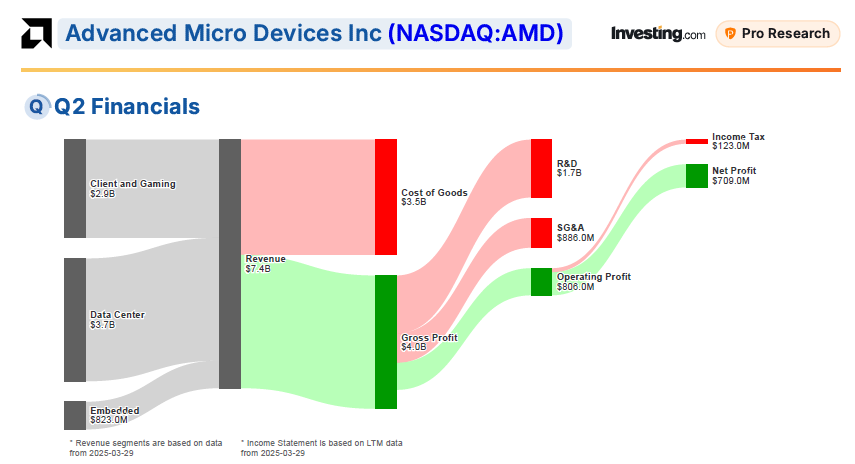In the fast-paced world of technology and finance, companies like Advanced Micro Devices (AMD), listed on NASDAQ, find themselves under intense scrutiny, especially when their stocks experience rapid ascension. Within the current year, AMD has seen its stock value catapult by nearly 50%, a stunning rally that has not only captured the attention of investors worldwide but has also stirred a mix of optimism and caution among financial analysts. As impressive as this rally is, some market watchers are now questioning if AMD’s valuation has reached a point of being “priced for perfection,” with technical analysts pinpointing a possible “double top” near the peak levels of last October. This pattern is often interpreted as a precursor to a potential market reversal, adding a layer of suspense to AMD’s financial saga.
Adding to the whirlwind of speculation, Lynx Equity Strategies recently issued a warning that the nearly 80% surge in AMD’s stock price over the preceding three months might not fully align with the company’s fundamental growth. This analysis, led by the esteemed KC Rajkumar, suggests that investors might be getting ahead of themselves, setting the stage for heightened expectations ahead of AMD’s forthcoming earnings report.
Elsewhere on Wall Street, voices of caution resonate from giants such as Morgan Stanley, Deutsche Bank, and Evercore ISI, all signalling potential headwinds for the broader market in the weeks and months ahead. The backdrop to their advisories is a broader market rally that has propelled indices to unprecedented heights since April, sparking debates about the sustainability of such gains and the likelihood of a forthcoming correction.
In-Depth Analysis
Amidst the swirling market dynamics, AMD’s strategic movements within the tech industry have not gone unnoticed. The company has been gradually encroaching on Intel’s territory, particularly in the lucrative segments of PC server processors, where it has successfully captured a growing market share. This aggressive expansion strategy is further complemented by AMD’s ability to command higher average selling prices for its premium desktop and laptop processors, testament to its robust product portfolio’s appeal.
Recent bullish forecasts from UBS and Bank of America underscore the optimism surrounding AMD’s future. UBS revised its target for AMD’s stock to $210, up from $160, buoyed by anticipated approvals for the reselling of MI308 chips in China. Concurrently, Bank of America elevated its target to $200 from $175.3, projecting AMD’s market share in the CPU sector to climb above 30% by 2026, provided Intel’s decline continues. Such projections underscore a belief in AMD’s strategic positioning and product strength, particularly against the backdrop of an ever-evolving tech landscape.
Furthermore, AMD’s rigorous execution of its product roadmap has not only fortified customer confidence but also attracted a clientele that previously harboured scepticism. The company’s prowess in both CPU and GPU markets enables it to offer integrated solutions for AI workloads and other intensive computing tasks, fostering further adoption as enterprises increasingly invest in AI infrastructures.
However, it’s not all smooth sailing for AMD, especially in the realm of Artificial Intelligence (AI), where NVIDIA maintains a dominant stance. NVIDIA’s lead in the AI GPU market, coupled with its well-established CUDA ecosystem, presents a formidable challenge for AMD. Any delays or performance pitfalls in AMD’s upcoming MI400 series could potentially exacerbate the divide with NVIDIA, complicating AMD’s ambitions in the competitive AI accelerator space.
Market and Technical Insights
As AMD braces for its Q2 2025 earnings announcement, the financial community’s eyes are fixed on the potential market implications. Technical analysis suggests a dramatic uptick in AMD’s stock price, which leaped approximately 139% from $76.48 in April 2025 to $182.50 in July 2025. Despite this meteoric rise, resistance levels around the 187-185 mark have persistently thwarted breakthrough attempts, hinting at the formation of a possible “triple top” pattern if post-earnings performance confirms resistance at the 182.50 level. A sustained break above this threshold and towards the 187.28 region could herald further gains, potentially propelling the stock towards the elusive $200 level.
In the derivatives markets, option trading metrics such as the Put/Call ratio offer additional insights into investor sentiment, suggesting a mix of cautious optimism and preparedness for potential volatility following AMD’s earnings disclosure. Such metrics, alongside advanced financial analysis tools provided by platforms like InvestingPro, equip investors with the nuanced perspectives necessary to navigate the complexities of the stock market.
As AMD continues to tread the delicate balance between lofty expectations and tangible performance, its journey is emblematic of the broader challenges and opportunities facing tech companies in today’s volatile markets. Whether AMD will indeed fulfill its ambitious projections or face the hurdles of heightened scrutiny remains a focal point of discussion among investors, analysts, and industry observers alike.



